Expo '70−Kubota Pavilion
“The Future of Food” Envisioned by Kubota
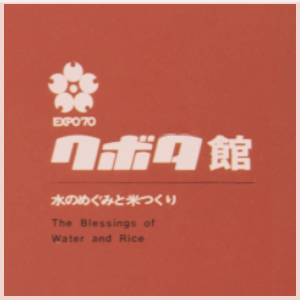
At Expo '70, the Japan World Exposition 1970, Kubota constructed its unique Kubota Pavilion, which consisted of three buildings and a garden featuring a waterfall. The Kubota corporate stance and social approach, which have remained unchanged both then and today, will be introduced through those Kubota Pavilion themes and exhibits.
The Expo '70 Theme:Progress and Harmony
for Mankind
From the late 1950s onward, Japan swiftly became affluent through rapid economic growth.
However, in contrast, air pollution and the destruction of nature had become serious social issues.
Amid those conditions, Expo '70 was held in Senri Hills (current Suita, Osaka Prefecture) in 1970.
Under the theme of Progress and Harmony for Mankind, many corporations and nations participated with exhibits and events held to consider ways to achieve progress while maintaining harmony with the natural environment.
As the first Expo in Asia and the first in Japan, 77 countries participated. The number of visitors during its six-months duration was a record 64,218,770. The site of this Expo, which boasts the highest number of visitors of any Expo ever held, remains today as Expo '70 Commemorative Park.
The Kubota Pavilion Theme: Bountiful Harvest
Kubota exhibited independently at the Kubota Pavilion under the theme of Bountiful Harvest.
The harmony between nature and society was expressed through the structures and exhibits.
With its business areas of food, water, and the environment, Kubota emphasized the importance of harmony with nature back then. Even more than half a century later, this idea is still rooted in our business, products, and solutions.
The Symbol Tower was a monopole structure utilizing a G Column (a seamless steel pipe formed into a tubular shape through centrifugal force). The expansive roof and glass-enclosed Sky Room, suspended from the single pillar with wire ropes, were used by visitors as places to relax as well as shelters from the rain and sun.
-
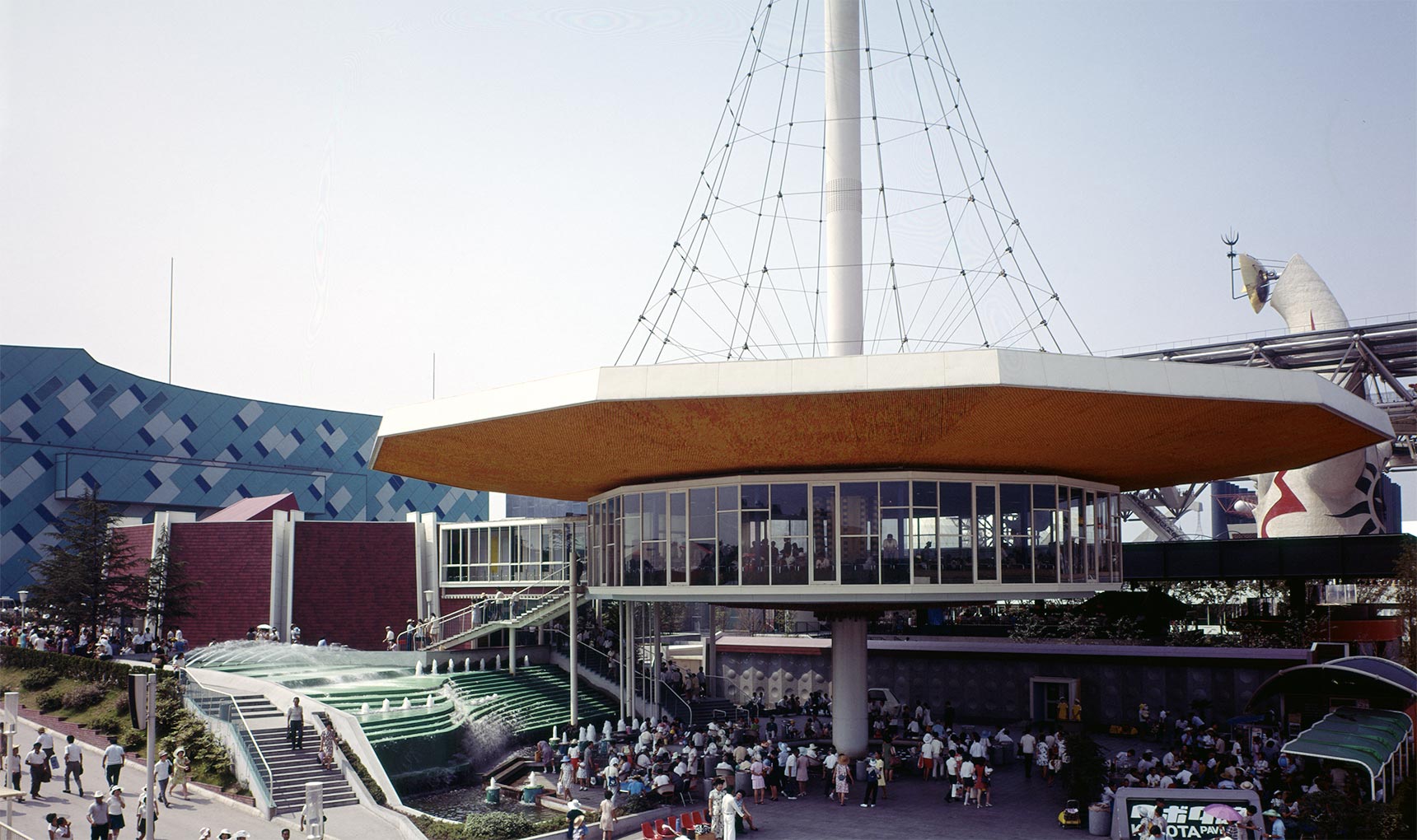
The Kubota Pavilion consisted of three buildings: the Symbol Tower, the Exhibition Building, and the Administration Building, as well as a garden with a waterfall.
The 400,000 plastic strips that were attached to the underside of the roof symbolized a bountiful harvest of rice. The Sky Room that doubled as a lounge area and an observation deck had comfortable sofas and harmonious idyllic music that created a relaxing atmosphere.
-
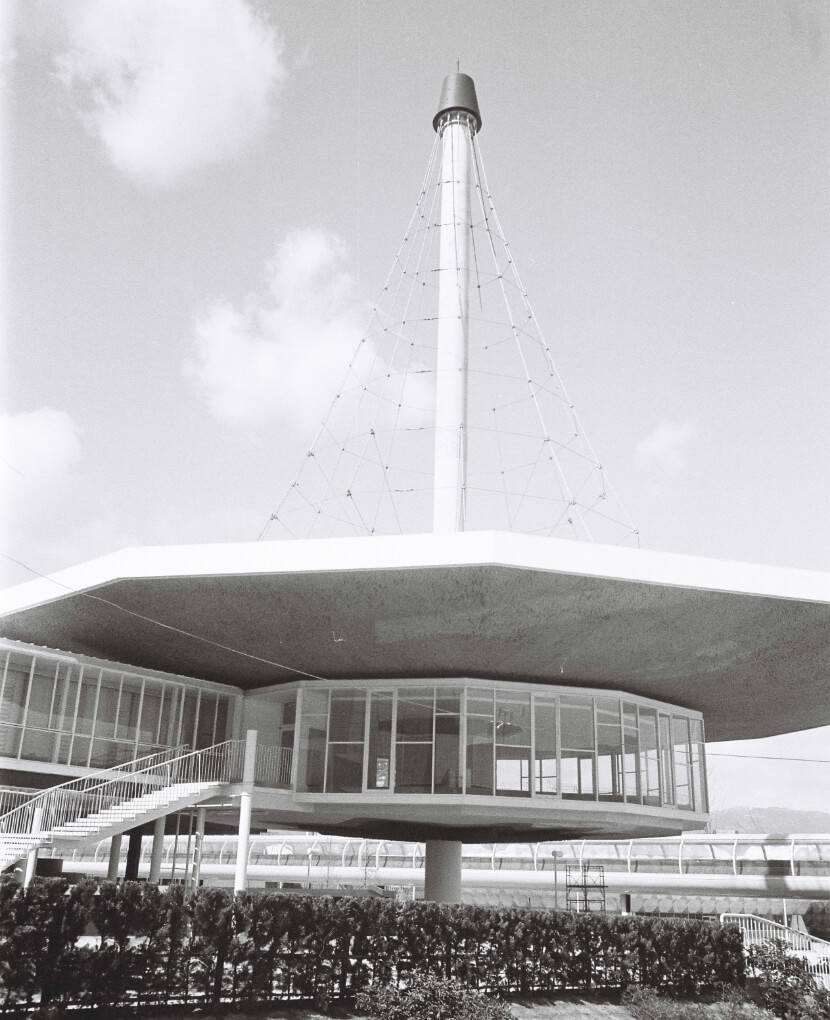
Symbolic tower with monopole structure
-

The underside of the large roof represented a "rice harvest"
Outside, there was a waterfall that made use of land elevation, a hydroponic flower garden, a fountain utilizing pump technology, as well as a water curtain, and Bountiful Harvest-themed music was played.
The Four Blocks in the Exhibition Building Represented “Bountiful and Cleaner Air, Water, and Green Spaces”
The Exhibition Building had a corridor layout, and visitors entered the movie hall after circling through the spaces delineated by walls. From the first through the fourth wall, the Exhibition Building was divided into four blocks expressing the basic concept of "spaces with more bountiful and cleaner air, water, and greenery."
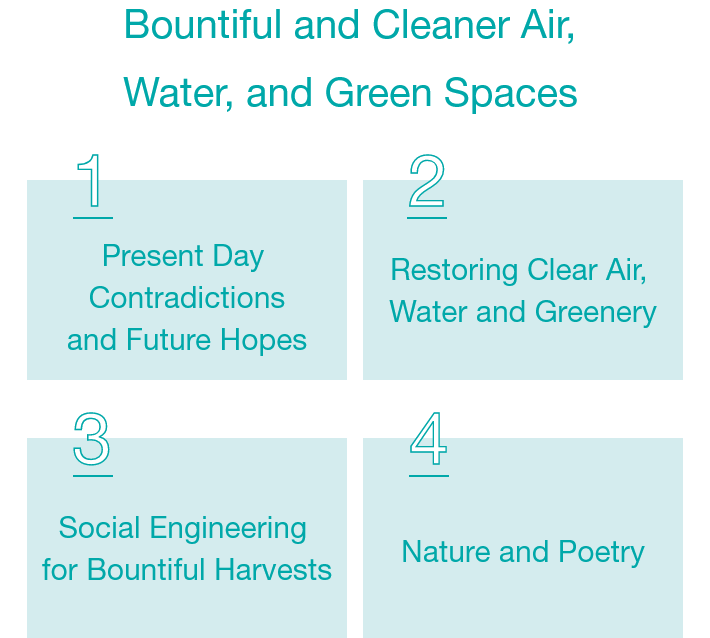
The First WallPhoto Exhibition on the Theme of "Present Day Contradictions and Future Hopes"
-
The first wall was organized as a photo exhibition on the theme of Present Day Contradictions and Future Hopes.
Here, black and white rotating panels and colored translucent sections were used. The front and back sides of the panels were independent of each other. The transitioning scenes expressed "profiles of the contradictions and confusion of modern society" and "human forms that retain their humanity even in the midst of such contradictions and confusion."
-
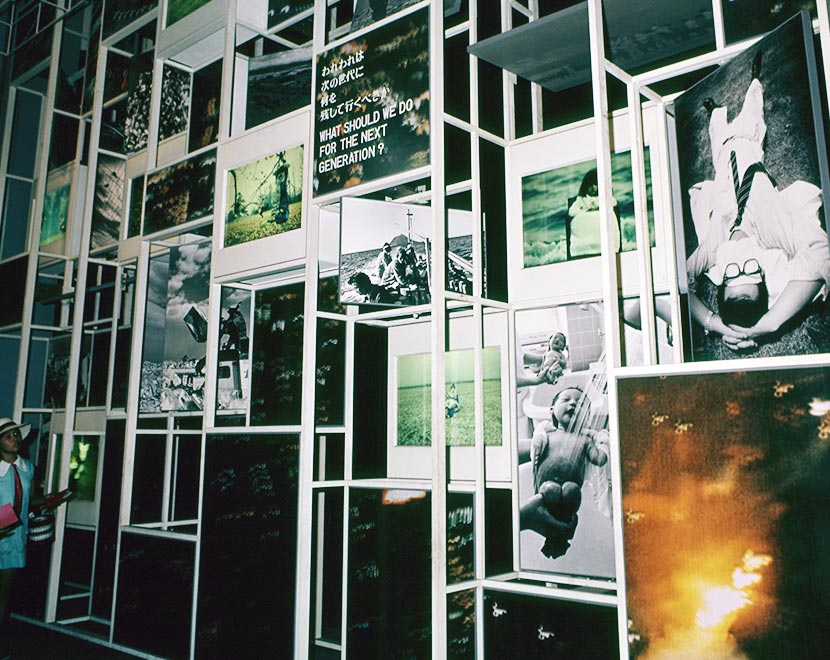
The Second Wall"Restoring Clear Air, Water and Greenery" Expressed in Sculpture
The theme of the second wall was Restoring Clear Air, Water and Greenery.
Modeled on an actual region, the approximately 1/10,000 scale sculpture relief depicting a city and a rural village joining forces to create an environment surrounded by sunshine, water, greenery, and clean air.
The ceiling above the second wall was made of molded colored acrylic, and as it was illuminated with light its color slowly changed, expressing the wish for the restoration of nature.
The Third Wall“Social Engineering for Bountiful Harvests” Was the Theme of the Illustrations on Display
-
The theme of the third wall was Social Engineering for Bountiful Harvests.
Four disks rotated to reveal and hide illustrations in the center and explained three issues related to the relationship between agriculture and society: overcoming natural conditions, mechanizing agriculture, and systemizing agricultural product distribution.
-
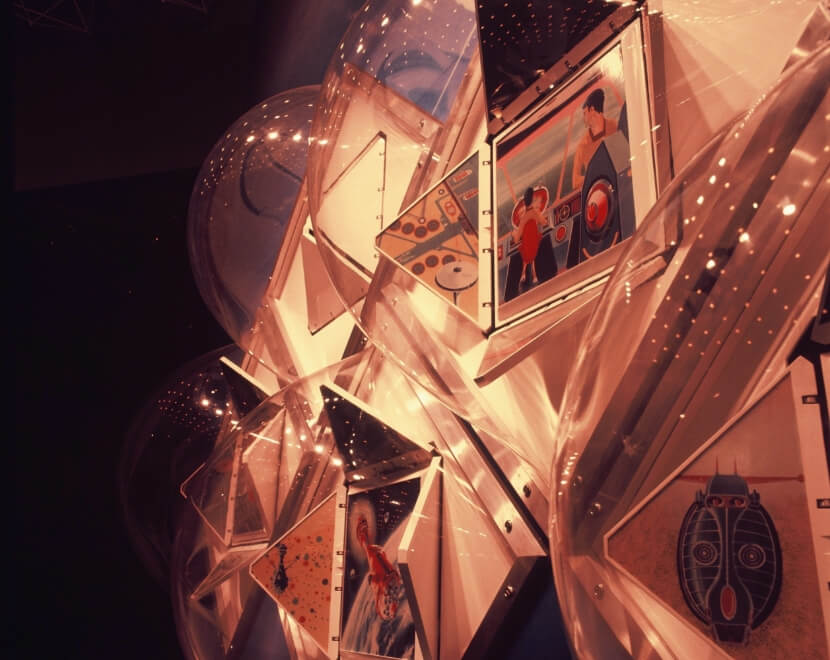
The “Dream Tractor” That Lead to Current Kubota Products Also Exhibited
-
Across from the exhibition wall, the Dream Tractor developed by Kubota Tekko K.K.(now Kubota Corporation) was on display. Its sports car-like design expressed the contribution of advances in science and technology to the future of agriculture. As well as in that space along the third wall, it was also displayed in the outdoor rest area.
The Dream Tractor's high functionality, comfortable ride, and simple operability are still made the most of in Kubota's current products.
-
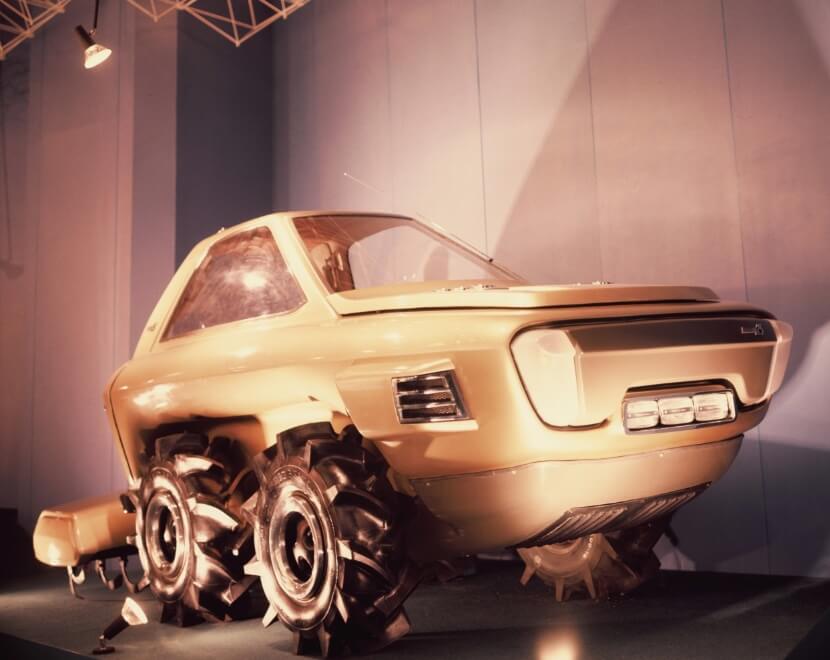
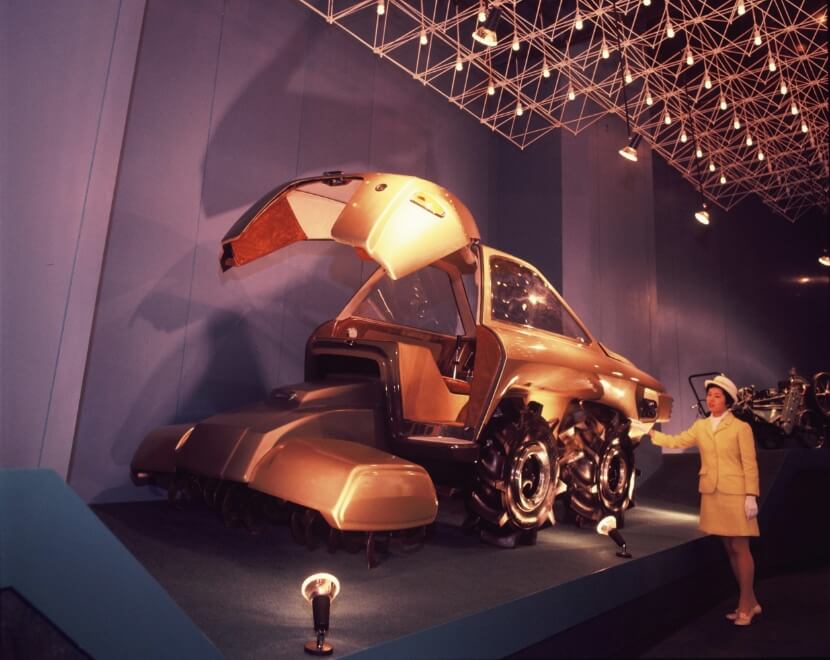
The Fourth WallColor Photography on the Theme of "Nature and Poetry"
On the fourth wall, near the entrance to the movie hall, color photography on a Nature and Poetry theme was displayed.
Against a background photo panel of a flock of birds flying across a clear sky, people enjoying clean air, water and green spaces were depicted.
-
A color film entitled "Rice Making Around the World" was shown in the movie hall.
Conveying the value of labor and the joy of harvest, scenes of rice planting and harvesting in rice-producing areas including Southeast Asia, Italy, Egypt and America, as well as rice cultivation customs in various regions around Japan, were projected on a multifaceted screen.
-

The Expo 2025 Osaka, Kansai, Japan Theme: Cutting-edge Food and Agriculture
Economic development and its impact on the natural environment became apparent in 1970. Even at that time, Kubota was thinking about harmony with the natural environment and was focusing on the future of food and agriculture. Half a century later, at Expo 2025 Osaka, Kansai, Japan, the future of food and agriculture that Kubota it has been thinking about will be presented.
The theme is Cutting-Edge “Food and Agriculture” Research and Development.
With the demand for a sustainable society, what form should food and agriculture take? Please look over Kubota's ideas and vision in addition to its cutting-edge technology.


